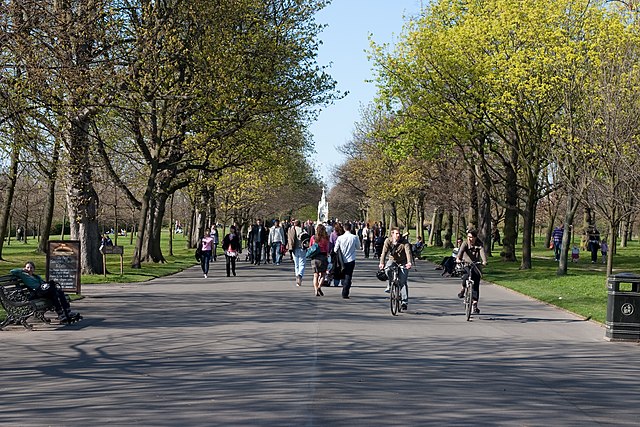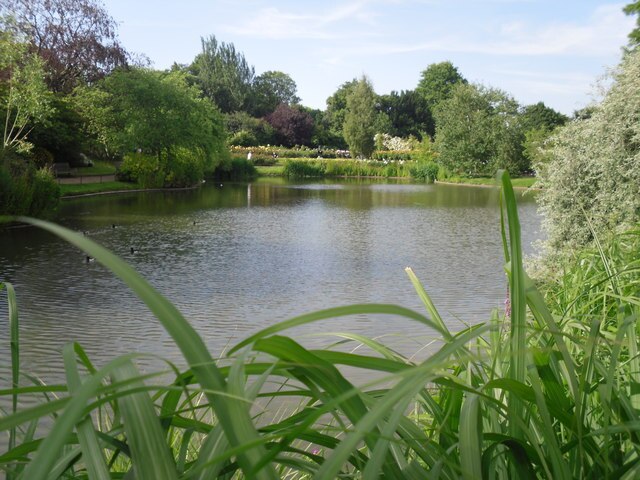Regent's Park is one of the Royal Parks of London. It occupies 410 acres (170 ha) of high ground in north-west Inner London, administratively split between the City of Westminster and the Borough of Camden. In addition to its large central parkland and ornamental lake, it contains various structures and organizations both public and private, generally on its periphery, including Regent's University and London Zoo.
Image: Regent's Park bandstand
Image: Regent's Park London
Image: Regent's Park in the "Beast from the East" snowstorm (25825917507)
Image: Pond view geograph.org.uk 1459516
The Royal Parks make up land that was originally used for the recreation, mostly hunting, by the royal family. They are part of the hereditary possessions of The Crown, now managed by The Royal Parks, a charity which manages eight royal parks and certain other areas of parkland in London. The Royal Parks charity was created as a company limited by guarantee in March 2017 and officially launched in July 2017. Its chief executive is Andrew Scattergood.
Herd of fallow deer in Bushy Park
View towards Horse Guards Parade in St. James's Park
The Royal Observatory in Greenwich Park
Aerial view of Hyde Park








